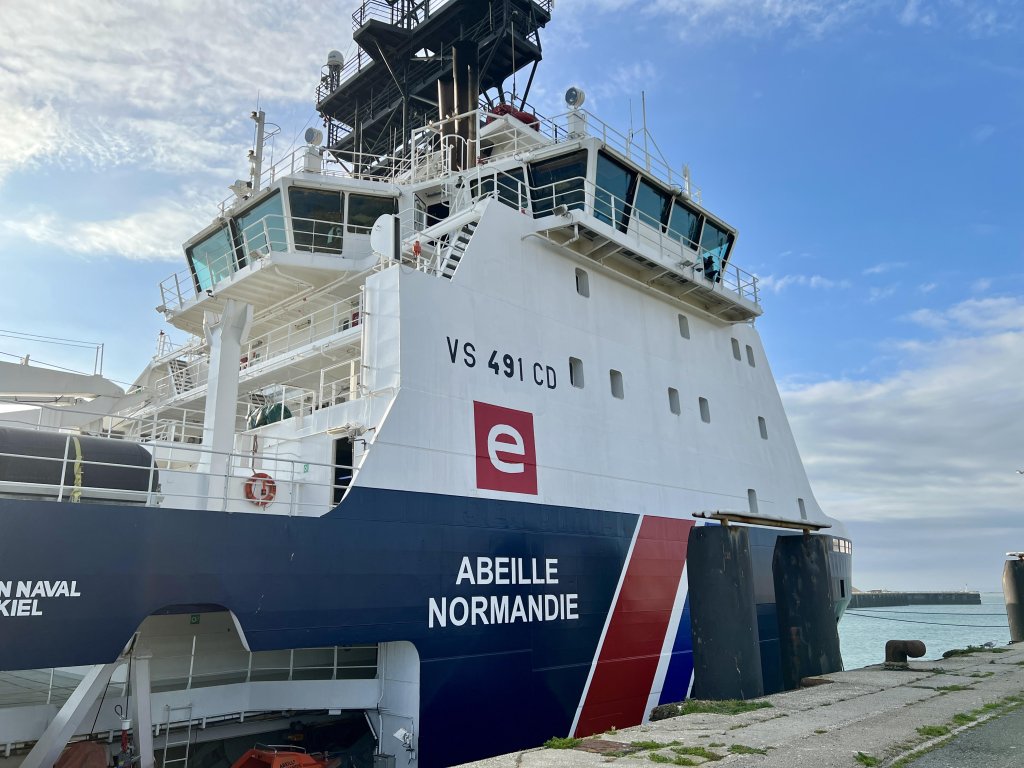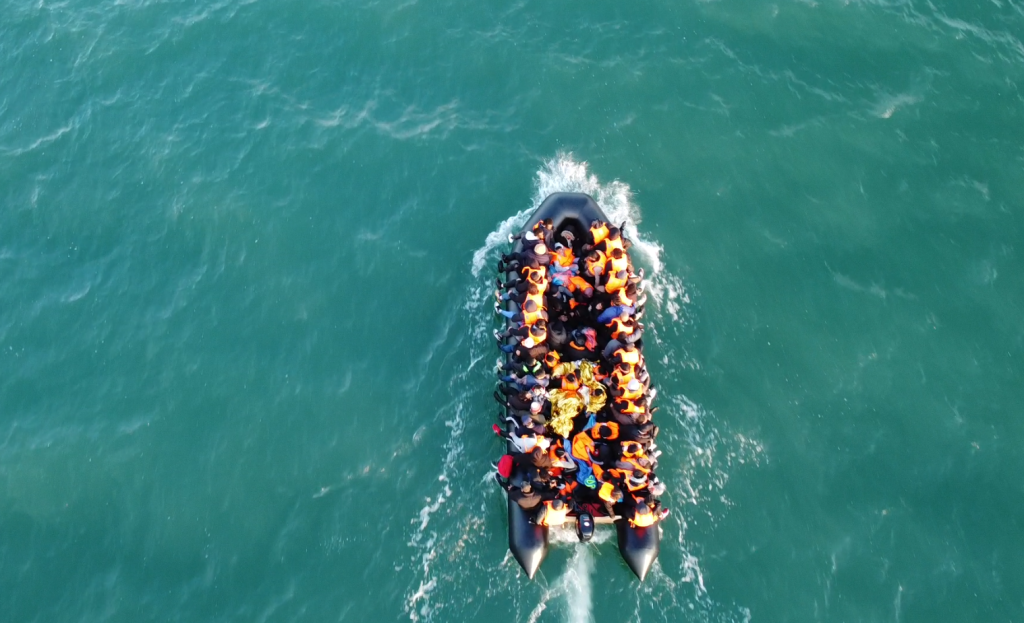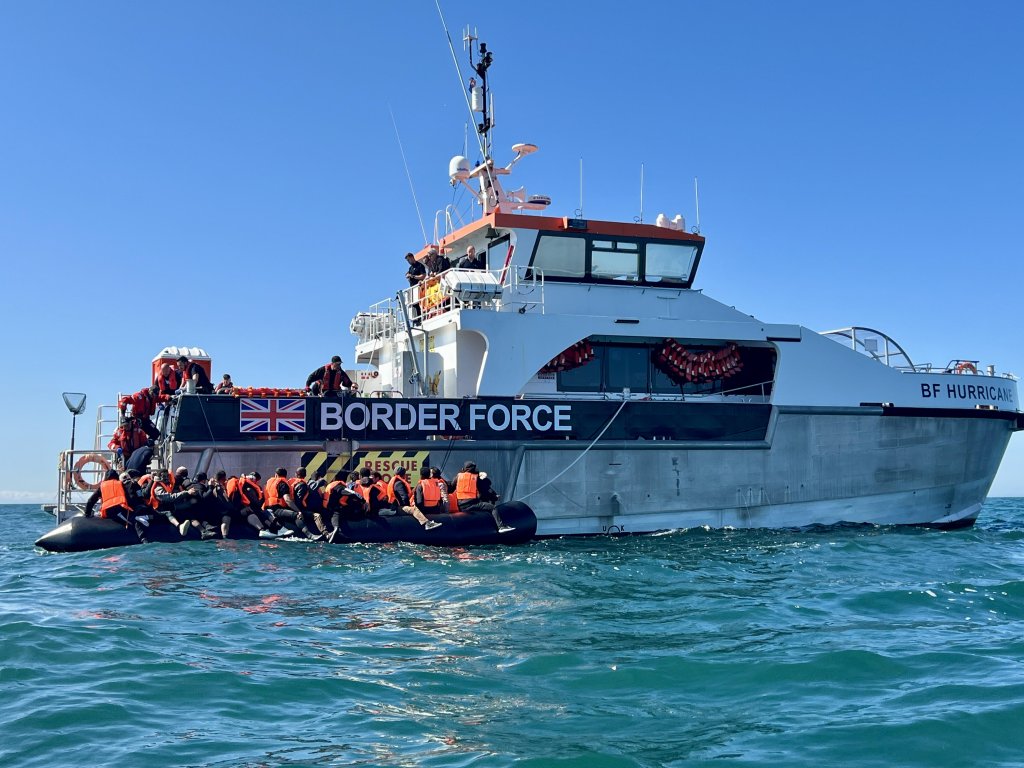Chartered by the French Navy, the Abeille Normandie traverses the English Channel in search of migrant boats in distress.
"All aboard"... Captain Nino Verlie's voice echoed through loudspeakers, while beneath the footbridge the greenish water swirled and formed two small whirlpools, signs that the machines were functioning. Sailors in orange jumpsuits unwound the large ropes securing the boat to the dock.
The Abeille Normandie left the port of Boulogne-sur-Mer, in Pas-de-Calais, where it was moored, at the designated departure time of 9 pm. The vessel chartered by the French Navy has been monitoring and rescuing migrant boats in the Channel since June 2022.
This migration route has been used for several years by migrants wishing to reach the United Kingdom. Over 13,000 people have crossed the Channel since January 1, 2024, despite the multitude of measures taken by France and the UK to prevent departures.
"We went from around 500 people having successfully completed the crossing in 2018, to nearly 30,000 in 2021," said Véronique Magnin, spokesperson for the maritime prefecture of the Channel and the North Sea (Premar). "We could not leave the French zone unsupervised any longer."
In addition to the police personnel deployed on the beaches, six boats carrying teams from the French Navy traverse the strait daily in search of "small boats" in distress. Rescuing migrants comprises 60 percent of the activities of Abeille Normandie, while the remaining time is used to tow ships in distress.
'We are here to take action in case there is a problem'
As night fell, only the dull, regular noise of the machines and a few radio exchanges broke the calm. The crew was in constant contact with the Gris-Nez Regional Operational Maritime Surveillance and Rescue Center (CROSS), responsible for coordinating rescues in the area.
"As soon as a boat has been reported by internal security forces on land, by a commercial or pleasure boat, or by the migrants themselves, the CROSS calls us and asks us to go to the area to see what is happening," said Magnin.
Read more: Channel crossings: 'More people die when they set sail than on the open sea'
Once the boat is spotted, the crew uses a smaller Zodiac boat to approach the passengers and gather as much information as possible: "Is the engine running? Are the passengers asking for help? How many are there? Do they have life jackets?," said the spokesperson.
"If no one asks for assistance, and the boat moves at a regular pace, we stay at a distance and follow it. We don’t force anyone into being rescued, but in the event of a problem, we are there to act." In the past, migrants have refused assistance from the Abeille Normandie and then changed their minds because of an engine failure.

Unlike the Tunisian and Moroccan coast guards operating in the Mediterranean and the Atlantic, French ships do not intercept migrant dinghies at sea.
"The migrants are usually not happy when they see French services coming to meet them, because they are trying to get to England. Thus, we do not take the risk of approaching them unless they ask us for help," said Magnin. "The consequences of a forced rescue, like a 'crowd movement', can be drastic."
Five migrants, including a seven-year-old child, died overnight between April 22 and 23, after "a crowd movement" at sea once the boat had set out from the beach of Wimereux. Nearly 110 people were crammed into the boat.
Yet if the migrants wish to be rescued, the Abeille Normandie will take them on board, where two heated rooms, one of which has beds and dry clothes, await them. Basic medical care is provided by the crew, and soft toys are offered to the children. "When they survive the crossing, holding a soft toy can be reassuring," said the spokesperson.
'One of the busiest maritime areas in the world'
On the night of June 23, the Abeille Normandie received a call from CROSS Gris-Nez just before 5 am. A small boat had been spotted one kilometer off the coast, near Gravelines. The moon was still visible, but the pink rays of the sun were showing on the horizon. A broad black line topped by another orange one appeared: an inflatable boat loaded with passengers wearing life jackets and sailing at slow speed.

The migrants did not request assistance and their boat moved forward. "We will be able to get a little closer to make a precise count of the people on board," said Nino Verlie. To get the most accurate figure possible, the crew activated a drone and piloted it above the boat. The images, later transferred to a computer, showed 60 passengers, including children wrapped in survival blankets in the center of the boat.
The French ship followed the small boat to British waters. After more than five hours of navigation in open wind, the boat carrying the migrants experienced some difficulties. "This maritime sector is one of the busiest areas in the world, with more than 600 commercial ships passing through it per day," Premar regularly writes in its press releases. The current moving from east to west pushed the small boat along the Franco-British border, which it managed to reach, but not without difficulty.
Read more: Migrants crossing Channel register a new daily record for 2024
'People can still fall into the water'
Once they arrived on the English side, a Border Force ship quickly motored toward the boat carrying the migrants. One of the passengers pressed his palms together toward the sky and smiled broadly. It was the final stage of his journey, which likely began thousands of kilometers away.
One by one, the passengers were hoisted into the coast guard’s boat. The joy of having crossed the Channel without incident mixed with the stress of the rescue created tensions. Passengers rushing to stand up were immediately stopped and reprimanded by the British.

While the tone of the British seemed harsh, a certain authority was essential for everyone's safety. "It's like when a plane lands and everyone wants to get out at the same time. The uncontrolled excitement can lead to panic and people can fall into the water," said Justine Merré, in charge of communications for Premar, and present in the Zodiac sent by the Abeille Normandie as reinforcement.
Once the last passenger was transferred into the English ship, the Abeille Normandie returned towards Boulogne-sur-Mer. That day, 257 people in four boats reached the United Kingdom.
Yet many migrants do not manage to complete the crossing. CROSS Gris-nez has coordinated the rescue of more than 2,700 people in distress in the Channel since January 1, 2024. It assisted in the rescue of over 6,000 people in 2023 – in that year at least 16 people died trying to reach the United Kingdom.
Read more: Are UK migration policies having the desired deterrent effect?
On the return journey, Commander Verlie said that he had never imagined he would one day be rescuing migrants at sea. After several years spent in the navy and towing ships in distress, rescue missions are now part his daily life.
"What I have been doing for two years is obviously very different from what I used to do. But I have no intention of stopping rescues," he said. "Nothing beats saving lives."
